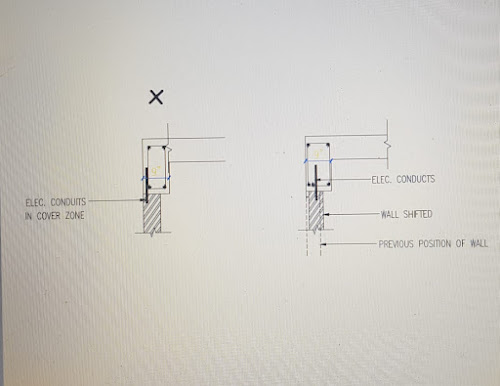WHAT IS SIEVE ANALYSIS TEST ??? WHAT IS THE PROCEDURE FOR SIEVE ANALYSIS TEST???
- Get link
- Other Apps
SIEVE ANALYSIS TEST
This procedure is applicable for checking
properties of aggregate like
Fineness modulus, grading & zone of fine aggregates.
1) Apparatus:
a) IS Sieves (40mm,
20mm, 10mm, 4.75mm 2.36mm, 1.18mm
b) balance pan,
c) weigh balance 10kg Capacity, Standard Weights.
2) Material : Dry aggregate
samples.
Conduct quartering for sample preparation
according to procedure
as shown below i.e. divide materials into
4 parts and select diagonally
opposite parts. Take
following quantity of materials for quartering.
FAII= 6kg
+ - 200 grams
CAI= 5 kg + - 200 grams
CAII= 5 kg + -
200 grams.
1) Take dry sample of FaII 1.5 Kg, CAI = 1.2 kg., CAII
= 1.2 Kg
( all + - 100
grams ) for sieve analysis and
start sieving.
2) Continue sieving till material stops falling through sieve.
3) Weigh samples retained on each sieve.
4) Calculate Cumulative Percent Passing, Cumulative Percent
Retained and Fineness Modulus (FM) using
the table given below.
5) FM = Addition of all values of Cum. Percent Retained / 100
Sieve Analysis
|
IS
Sieve Size(mm) |
Wt held |
Wt. passed |
% passing |
% held. |
|
40 mm |
|
|
|
|
|
20 mm |
|
|
|
|
|
10 mm |
|
|
|
|
|
4.75 mm |
|
|
|
|
|
2.36 mm |
|
|
|
|
|
1.18 mm |
|
|
|
|
|
0.6 mm |
|
|
|
|
|
0.3 mm |
|
|
|
|
|
0.15 mm |
|
|
|
|
|
Balance |
|
|
Σ= |
|
|
Total |
|
|
F.M. |
|
Sample
Calculations
|
Building: |
Material: Fall |
Sample: |
1500 gm |
Date: |
|
|
Sr
No |
Sieve
Size(mm) |
Wt.
Held |
Wt.
Passing |
%
Passing |
%
Held |
|
1 |
40mm |
0 |
1500 |
100 |
0 |
|
2 |
20mm |
0 |
1500 |
100 |
0 |
|
3 |
10mm |
5 |
1495 |
100 |
0 |
|
4 |
4.8mm |
150 |
1345 |
90 |
10 |
|
5 |
2.4mm |
200 |
1145 |
76 |
24 |
|
6 |
1.2mm |
420 |
725 |
48 |
52 |
|
7 |
0.6mm |
280 |
445 |
30 |
70 |
|
8 |
0.3mm |
405 |
40 |
3 |
97 |
|
9 |
0.15mm |
35 |
5 |
0 |
100 |
|
|
Balance |
5 |
|
Σ= |
353 |
|
|
Total |
1500 |
|
F.M. |
3.53 |
6) Observation/Conclusion :
Fineness Modulus of aggregate as per Sample calculation = 3.53.
Zone of Fine aggregate = 2.
- Get link
- Other Apps


Comments
Post a Comment